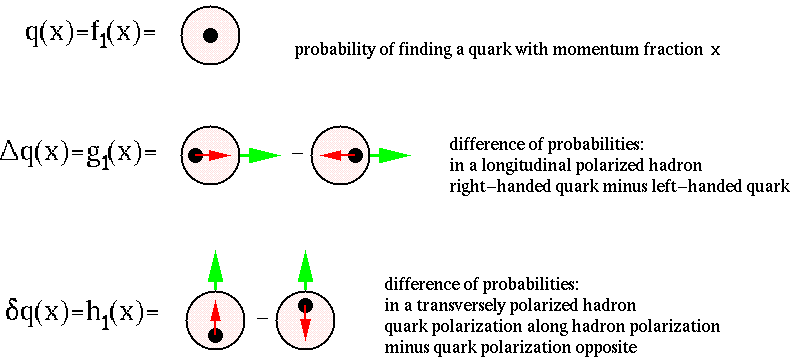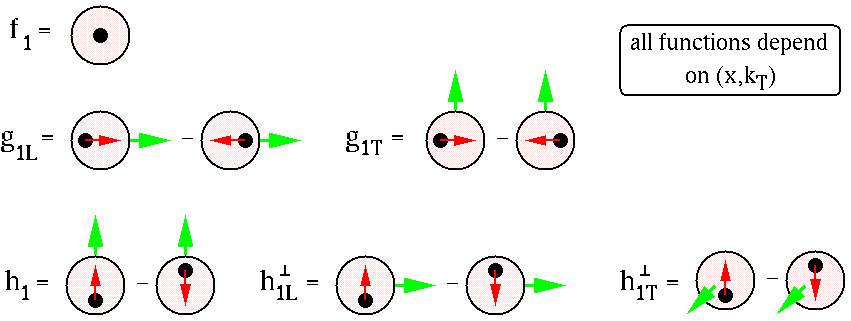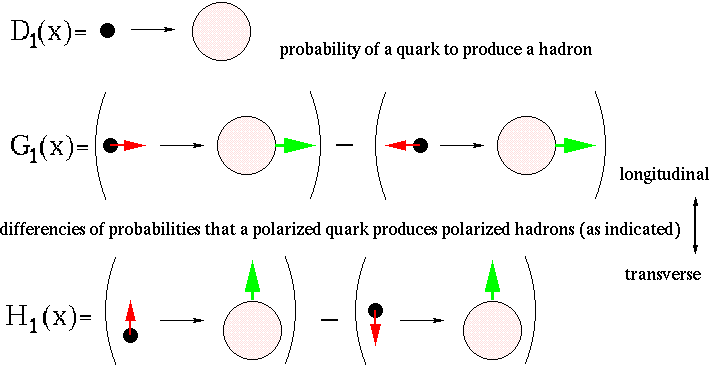 text on fragmentation functions (this page)
text on fragmentation functions (this page) |
|---|
| parton distribution functions (PDFs) |
| unintegrated PDFs |
| fragmentation functions (FFs) |
| unintegrated FFs |
| multiple-hadron FFs |
| model calculations |
| target fragmentation and fracture functions |
| sitemap | text on FF | references | parametrizations | links | ESOP |
this is an introductory
 text on fragmentation functions (this page)
text on fragmentation functions (this page) |
|---|
| parton distribution functions (PDFs) |
| unintegrated PDFs |
| fragmentation functions (FFs) |
| unintegrated FFs |
| multiple-hadron FFs |
| model calculations |
| target fragmentation and fracture functions |
The PDFs have a formal definition via hadronic matrix elements of (non-local) quark and gluon field operators. They encode the information on the structure of the initial state hadron(s) and acquire a simple interpretation in the QCD-improved parton model, where they give the probabilities of finding a parton with a certain momentum fraction inside the parent hadron.
Experiments with polarized beams and/or targets give access to information on the spin structure of the hadrons in terms of polarized PDFs. To leading order (in an expansion in inverse powers of the hard scale) there are three different functions in the quark sector:


In principle, although experimentally difficult, detection of polarization
for final state hadrons gives access to information on spin correlations
in the hadronization process in terms of polarized FF's.
Like the PDFs, to leading order the FFs have an intuitive probabilistic
interpretation.

target fragmentation and fracture functions
Since the information encoded in PDFs and FFs is complementary (distribution of partons in hadrons -- hadronization of partons) only the knowledge of both will enable us to finally understand confinement.
 back to the sitemap
back to the sitemap  up to the list of content
up to the list of content
 transverse momenta between partons and produced hadrons
transverse momenta between partons and produced hadrons  `T-odd' fragmentation functions
`T-odd' fragmentation functions  power corrections / renormalons
power corrections / renormalons  text on current versus target fragmentation
text on current versus target fragmentation  FF's in Monte Carlos
FF's in Monte Carlos  interference FF's, multiple hadron FF's
interference FF's, multiple hadron FF's  multiplicities
multiplicities  ...
... back to the sitemap
back to the sitemap  up to the list of content
up to the list of content
Last modified: Thu, May 24, 2002 -- 11:14 --